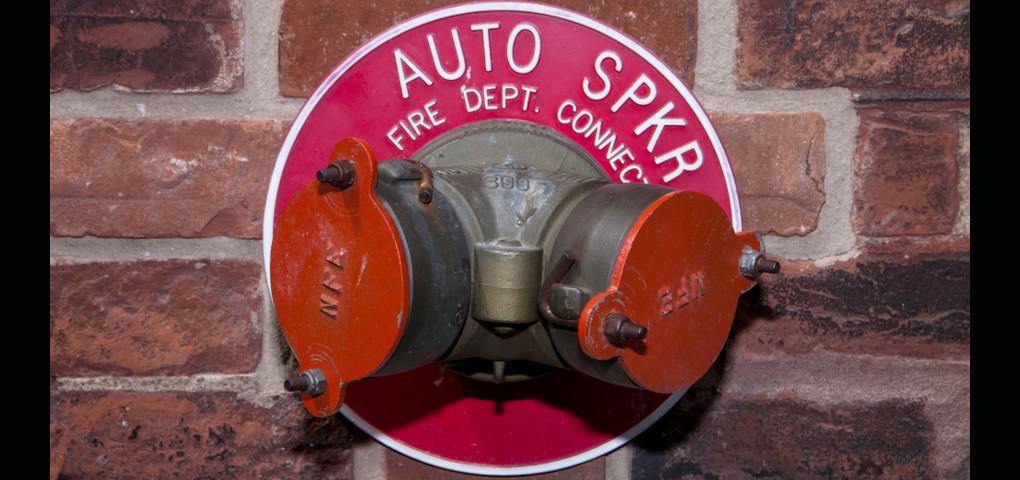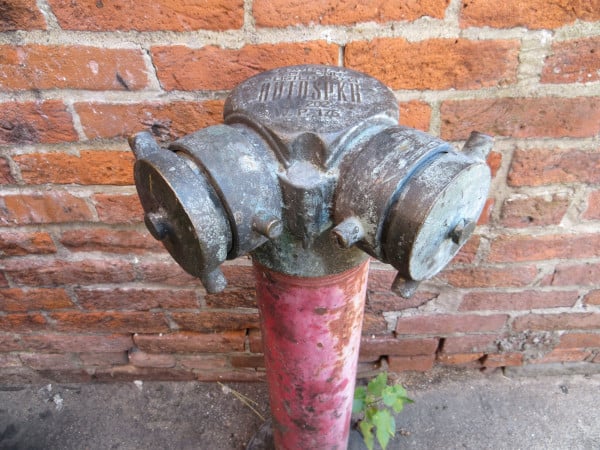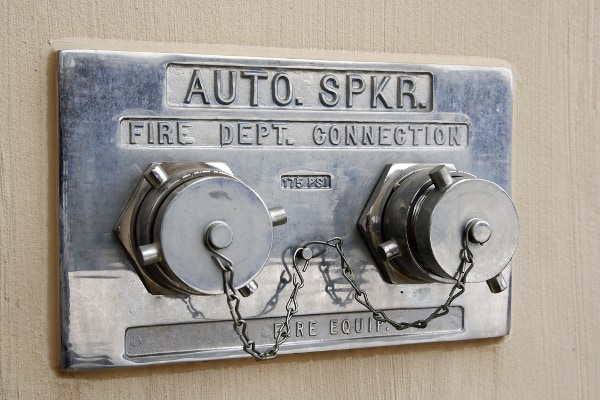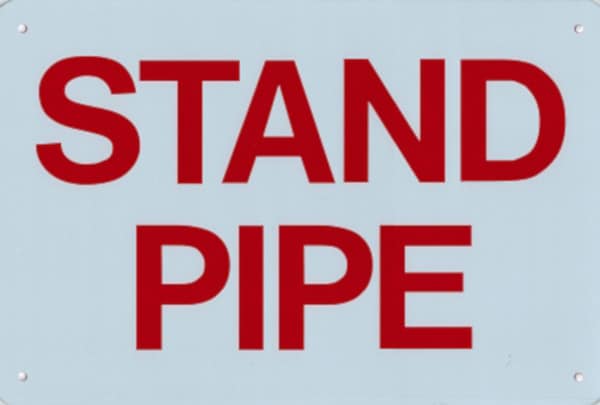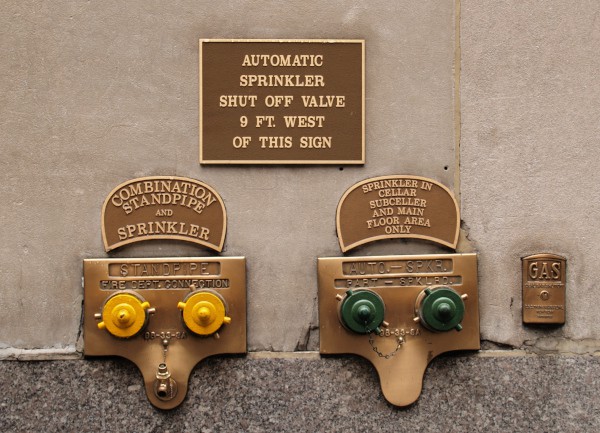The problem: If firefighters can’t find it, they can’t use it
In an emergency, every second counts—and if your fire department connection (FDC) isn’t clearly marked, searching for this vital part wastes time that firefighters could be using to fight the fire. Whether it’s a wall-mounted or freestanding FDC, missing or unclear signage can make it harder to locate the equipment and quickly determine what system it supports.
That potentially puts property and lives at risk during a fire—along with your system’s ability to pass an inspection at any time.
Why this matters: increased risk and code violations
and standpipe systems. Without them, firefighters may be left without a reliable water source in the midst of a fire. National Fire Protection Association (NFPA) standards require that each FDC be clearly marked to indicate where it is and what it serves—because that information is critical in a high-stakes moment.
NFPA 14 (2024), 9.9.5.2: “Each fire department connection shall be designated by a sign, with letters at least 1 in. (25 mm) in height, that reads ‘STANDPIPE.’ For manual systems, the sign shall also indicate that the system is manual and that it is either wet or dry.”
NFPA 14 (2024), 9.9.5.2.1: “If automatic sprinklers are also supplied by the fire department connection, the sign or combination of signs shall indicate both designated services (e.g., ‘STANDPIPE AND AUTOSPKR’ or ‘AUTOSPKR AND STANDPIPE’).”
NFPA 25 (2023), 13.8.1: “Identification signs shall be inspected quarterly to verify that they are in place.”
Failing to meet these requirements isn’t just noncompliant—it’s dangerous. Firefighters rely on these signs to get water flowing fast.
The fix
Simple: install the correct FDC signage to meet system inspection requirements and support emergency response.
If your FDC is wall-mounted, choose a properly labeled identification plate (round or square, depending on the FDC body type and number of inlets on your equipment). Freestanding FDCs need signs mounted to posts, hung from the FDC, or placed nearby on walls. Either way, the signs must clearly state what the FDC serves—standpipe, sprinkler, or both:
- STANDPIPE
- AUTOSPKR
- STANDPIPE AND AUTOSPKR
Remember, NFPA also requires that if your system is a manual standpipe system, the sign must indicate this and specify whether its type is wet or dry. In addition, if the FDC serves multiple buildings or locations, those details must also be shown (9.9.5.3). For high-pressure systems (150+ PSI), the sign should indicate the required inlet pressure to meet the system demand (9.9.5.2.2, 9.9.5.2.2.1).
Check with your fire protection contractor or local authority having jurisdiction (AHJ) if you’re unsure what’s needed—then install the signage that keeps you code-compliant and emergency-ready.
Buyer’s guide
To meet NFPA standards, your FDC signage must match your system:
- Standpipe-only FDC? Use a STANDPIPE sign or plate.
- Sprinklers only? Use an AUTOSPKR sign or plate.
- An FDC that serves standpipes and sprinklers? Use signage that clearly indicates STANDPIPE AND AUTOSPKR
Identification plates fit around wall-mounted FDCs, and they may be round or square, depending on the number of inlets and the shape of the FDC body:
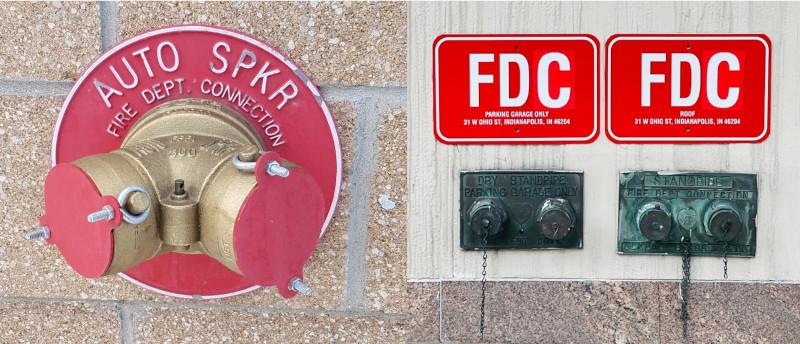
FDC signs are placed above or near the FDC when plates aren’t possible (and they may be used in addition to plates):
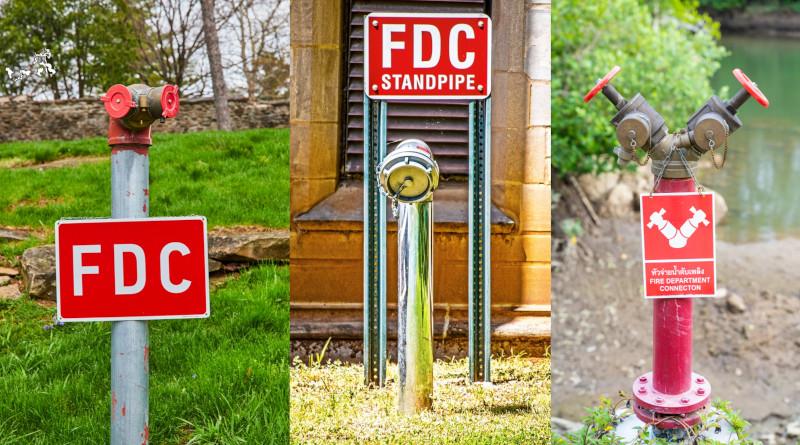
Choose a placard based on your FDC location and system type. Always ensure the letter size and information match NFPA requirements.
Product recommendations
Shop QRFS’s full selection of FDC signage
Have questions or need something you don’t see in our inventory? Contact us!
FAQs
Do all FDCs require signage?
Yes. NFPA standards (NFPA 14, 13, and 25) require signs that, at a minimum, indicate what type of system (standpipe, sprinkler, or both) the FDC supplies.
What should my FDC sign say?
It must state the system type: STANDPIPE, AUTOSPKR, or both. Manual systems must also state “manual” and whether they are “wet” or “dry.” FDCs that serve multiple buildings or locations must have signs specifying all of the buildings or locations. Finally, FDCs serving uncommon high-pressure systems (150+ PSI) need a sign indicating the required inlet pressure to meet the system demand.
What size should the letters be?
NFPA 14 and NFPA 13 mandate a minimum of 1-inch-high letters on FDC signs.
Where should the sign be placed?
Wall signs go above or near the FDC. For freestanding FDCs, use posts, hangers, or nearby wall mounting. Identification plates are used for wall-mounted FDCs, often in conjunction with separate wall signs, to enhance visibility and convey additional information.


